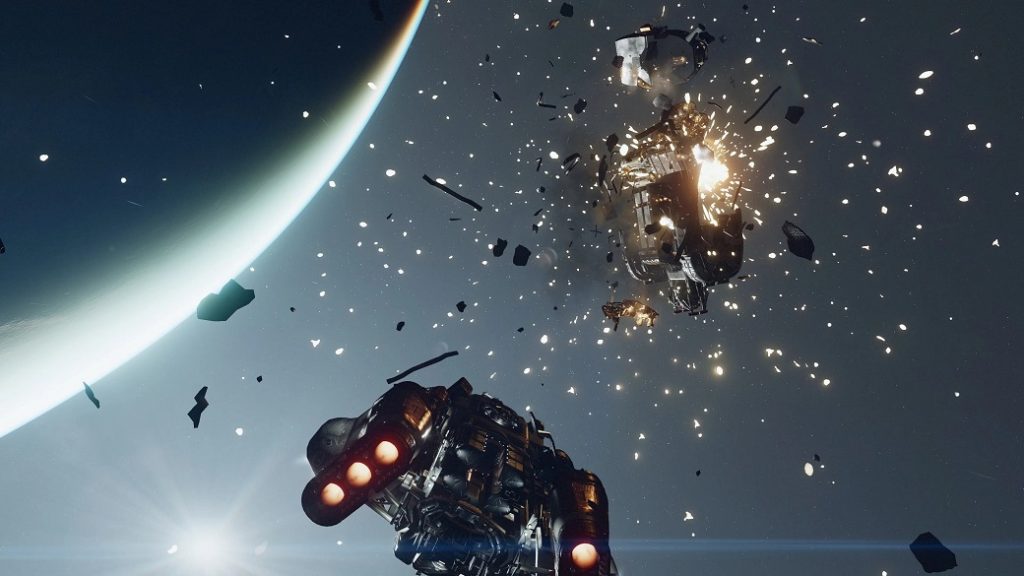After a quarter-century of eager anticipation, the impending release of “Starfield” is sending waves of excitement throughout the gaming community. Bethesda’s long-awaited new game is finally on the horizon, and enthusiasts are hungrily dissecting every morsel of information gleaned from the glimpses offered in recent showcases and trailers. With each passing day, these dedicated fans are unearthing fresh revelations about the project, uncovering hidden gems within the limited footage that has been unveiled.
In an intriguing twist, a luminary in the realm of Halo expertise, Rebs Gaming, has emerged as a key figure in the ongoing analysis of “Starfield.” Notably, this perceptive insider has cast a spotlight on an unexpected detail: Pluto, the frigid and desolate dwarf planet, has been ingeniously integrated into the game’s expansive solar system. This revelation is nothing short of awe-inspiring, as Bethesda has masterfully interwoven the diminutive celestial body as a fully explorable entity among the game’s cosmic tapestry.
The inclusion of Pluto as a traversable globe within “Starfield” serves as a testament to Bethesda’s meticulous attention to detail and commitment to delivering an immersive gaming experience. This unexpected addition not only broadens the scope of the game’s universe but also highlights the developer’s dedication to fusing real-world astronomical elements with imaginative storytelling. As the countdown to the game’s launch intensifies, the revelation of Pluto’s inclusion stands as a tantalizing glimpse into the intricacies that await players in this highly anticipated spacefaring adventure. The melding of science and fiction within “Starfield” is poised to captivate audiences and propel gaming into uncharted territories of wonder and exploration.

A New Addition to The Gameplay
In the expansive gameplay presentation of Starfield, an intriguing revelation has emerged that has piqued the curiosity of vigilant fans. Within the star map showcased in the game, a distinct depiction of our solar system comes into view. A recent enthusiast’s discovery has illuminated an unexpected detail: the portrayal of not eight, but nine planets gracing the cosmic stage—a departure from the official count of the International Astronomical Union, which recognizes only eight planets.
The genesis of this divergence traces back to the pivotal year of 2006 when Pluto underwent a seismic transformation in its planetary standing. The esteemed assembly of astronomers within the International Astronomical Union reclassified Pluto, relegating it from the ranks of full-fledged planets to the more modest designation of a dwarf planet. This decision stemmed from Pluto’s relatively diminutive dimensions, measuring slightly over 2,000 kilometers in diameter. The intricacies surrounding this decision were further compounded by the presence of comparable celestial bodies in the solar system that did not receive planetary status.
Curiously, it seems that Bethesda, the masterminds behind Starfield, opted to diverge from this astronomical consensus. Whether out of creative license or an endearing nod to the erstwhile ninth planet, the developers have accorded Pluto a distinctive place among the celestial lineup of nine planets within their virtual universe. It’s conceivable that the intention was to not overlook the notable dwarf planet while also avoiding the complexities of assigning it a singular category.
Notably, the homage to Pluto’s planetary status isn’t exclusive to Starfield’s creators. In a parallel narrative, the Illinois State Senate, in a gesture of tribute, continued to bestow planetary recognition upon Pluto in 2009. This nod to Pluto’s original classification perhaps owes its existence to Clyde Tombaugh, the luminary who first discovered Pluto and hailed from the same region. As Starfield’s cosmos prepares to unfold, the tale of Pluto’s virtual planetary reclamation emerges as a captivating footnote—a testament to the enduring allure of exploration and celestial wonder.
